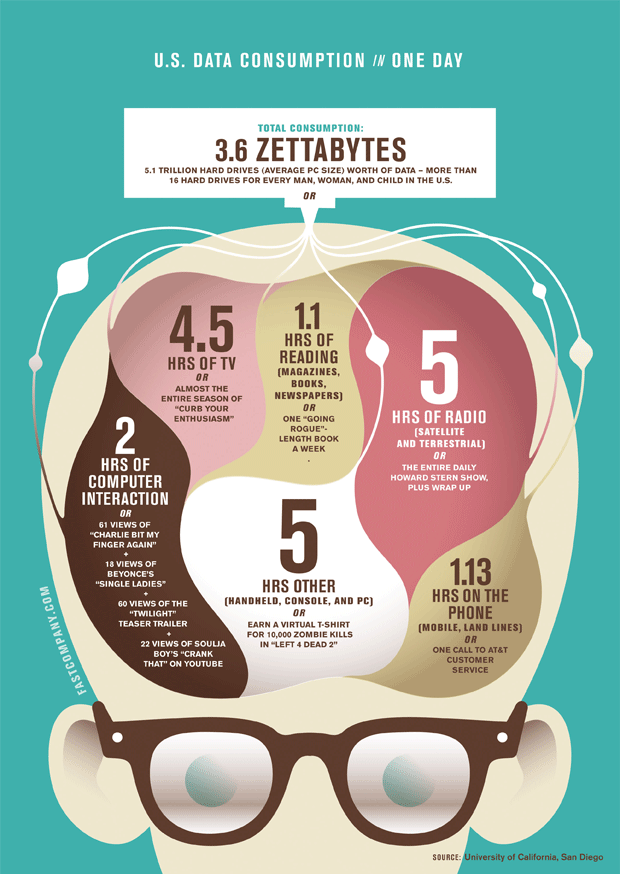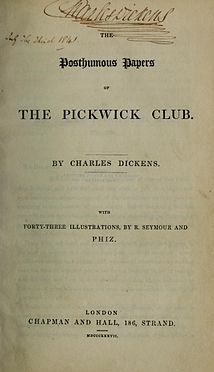The Lesson Content Marketers Need to Learn from Charles Dickens
I was watching a show on Netflix a few nights ago that has become a new favorite of mine.
It’s called Monumental Mysteries and it’s from the Travel Channel.
I love how they tell little-known stories from history with suspense and intrigue.
The particular episode that I was watching reminded me about something that I had forgotten about Charles Dickens.
The segment on Dickens was all about a literary technique that Dickens harnessed in such an incredible way that it enabled him to become the famous author we know him as today.
In fact, he became so popular in his day that an unbelievable scandal took place after he died.
(You won’t believe it when I tell you what it is. In fact, you’ll think it’s been pulled from an episode of Fringe or X-Files.)
Anyway, I want to tell you more this, because this literary technique is something that very few content marketers use.
Which is a shame. Why?
Because harnessing its power is the only hope they have of achieving three things that are becoming more and more impossible in this non-stop, 24-7, A.D.D. world.
I’ll explain more in a little bit.
But first let me tell you what this technique is and how Dickens used it…
The Forgotten Series That Made Dickens Famous
Charles Dickens is famous today for many works such as: David Copperfield, A Christmas Carol, and A Tale of Two Cities.
But what you might not know is that he got his break as the author of The Posthumous Papers of the Pickwick Club (also known “The Pickwick Papers”).
But this wasn’t just a stand-alone novel.
The technique that Dickens harnessed in creating this novel is called serialization or serial literature.
It wasn’t just a single book.
It was a series of short stories that were released over time (19 issues over 20 months).
In this series of stories, Dickens created an intriguing group of characters that drew people into his stories.
Here are three of the well-known characters he created for this story:
- Samuel Pickwick — the founder of the Pickwick Club
- Nathaniel Winkle — a young friend of Pickwick’s and his travelling companion (Winkle thinks of himself as sportsman, but his handling of horses and guns is so horrible it’s dangerous.)
- Augustus Snodgrass — another young friend of Samuel’s who considers himself a poet, but whose poems are never presented in Dickens’ story.
But Dickens didn’t just create intriguing characters and deliver the story over time.
He added another key element to his serialized stories…
Serialization Plus Suspense
Dickens not only revealed who these people were and had their stories play out over multiple segments, but he also ended the stories with suspense.
I’ll show you what I mean.
Watch how Dickens ended Volume I…
“Ah!” said the old lady, “there was just such a wind, and just such a fall of snow, a good many years back, I recollect—just five years before your poor father died. It was a Christmas Eve, too; and I remember that on that very night he told us the story about the goblins that carried away old Gabriel Grub.”
“The story about what?” said Mr. Pickwick.
“Oh, nothing, nothing,” replied Wardle.
“About an old sexton, that the good people down here suppose to have been carried away by goblins.”
“Suppose!” ejaculated the old lady. “Is there anybody hardy enough to disbelieve it? Suppose! Haven’t you heard ever since you were a child, that he was carried away by the goblins, and don’t you know he was?”
“Very well, mother, he was, if you like,” said Wardle, laughing.
“He was carried away by goblins, Pickwick; and there’s an end to the matter.”
“No, no,” said Mr. Pickwick, “not an end of it, I assure you; for I must hear how, and why, and all about it.”
Wardle smiled as every head was bent forward to hear; and filling out the wassail with no stinted hand, nodded a health to Mr. Pickwick, and began as follows:
But bless our editorial heart, what a long chapter we have been betrayed into! We had quite forgotten all such petty restrictions as chapters, we solemnly declare. So here goes, to give the goblin a fair start in a new one! A clear stage and no favour for the goblins, ladies and gentlemen, if you please.
END OF VOL. I
Do you see how he kept the reader in suspense?
He suddenly stopped the story Wardle was telling and began to speak directly to the reader.
In the author’s “voice” he began to explain to the reader how long the chapter had gotten.
(I italicized this part to make it stand out for you.)
Then he said he needed to give the goblin a “clear stage” in the next book.
And that’s how he ended it!
He just left people hanging, waiting to hear more about the goblins!
By doing this, Dickens drew people into to his stories.
In fact, the series became so popular that this book became what some have called the first real publishing phenomenon.
(It became so popular that there were bootleg copies, theatrical performances, joke books based off of his stories, and other merchandise.)
People were so attracted to these characters and their stories that they wanted to be the first one to know what was going to happen next in the story.
This created buzz, because they would talk to others about the story and they’d try to guess about what would happen next.
This created an incredible momentum.
This propelled Charles Dickens’ career and gave him a platform to create all his well-known stories that are still with us today.
(In fact, he continued to use this technique when he wrote some of his later books.)
This Literary Technique Creates Hit TV Shows and Blockbuster Movies
This technique still works! The most popular TV shows and movies that have come out in the last 15 years have also harnessed this technique mixed with suspense. (Dickens would’ve been proud!)
Here is just a small list of some of these shows:
- Blacklist
- Blindspot
- Once Upon a Time
- Alias
- LOST
- The Walking Dead
- Star Wars
- Hunger Games
- The Hobbit
- Lord of the Rings
Impressive isn’t it?
But you might be wondering, “But how does this apply to content marketers?”
Great question.
It’s now time for me to begin to reveal how this technique can enable content marketers to achieve those three things that are becoming more and more impossible in this non-stop, 24-7, A.D.D. world.
The Content Marketer’s Only Hope of Achieving the Impossible
With people’s attention spans shrinking to less than a goldfish’s attention span, and content becoming a commodity, content marketers are facing an uphill battle.
In a post titled, “Content Shock: Why content marketing is not a sustainable strategy,” Mark Schaefer rocked the content world by addressing this problem head on.
He said, “This upward trend of content consumption is not sustainable because every human has a physiological, inviolable limit to the amount of content they can consume.”

This infographic was used on FastCompany.com for an article called “AMERICA HUNGRY, NEED DATA“. It gives you a great visual of what Mark is talking about.
Smaller attention spans. Content overload.
These things have made it almost impossible for content marketers to capture the hearts of their prospects and customers, seize their attention, or even create anticipation for their content.
That’s where serialization and suspense step in.
Because you see, serialized fiction was created to capture busy readers attention.
Let me explain.
On Plympton.com, literary studio Plympton explains that the modern serial novel was created in France to increase newspaper circulation.
“It was 1836 and a Parisian businessman was trying to figure out how to get subscribers in the habit of buying a daily newspaper instead of the typical weekly. He decided that the best way to hook readers was to include pieces of an original novel in his publication. He approached the most popular novelist of his day, Honorè de Balzac, and the serial novel was born.”
They go on to explain that serialization became the way to build an audience.
“Many of the novels we consider classics of the period began life as serials, including Eliot’s Middlemarch, Flaubert’s Madame Bovary, Tolstoy’s Anna Karenina, Dostoevksy’s The Brother’s Karamazov, James’ Portrait of a Lady, and Twain’s Huckleberry Finn.”
(NOTE: This echoes what I wrote in a recent post about how building an audience is what all successful people have done throughout history.)
I believe that it is only by tapping into this proven literary technique that content marketers have any chance of achieving the impossible: capturing the hearts and attention of their audience and creating anticipation for their content.
If it can work for all of these successful authors of the past, and if it still works for the top movie and television producers of our day, then it can be used by content marketers – if it’s used correctly.
Pamela Wilson in a post on CopyBlogger.com called, “8 Incredibly Simple Ways to Get More People to Read Your Content,” encourages content marketers to use this technique when she says…
“If you want to cover a complex topic, consider breaking it into a series of posts. It’s a great way to keep people coming back for more, and your reader will find it easier to digest your content if they get it in portion-controlled sizes.”
I think that in order for the full impact of serialization and suspense to really work for you, it needs to be applied to your content on both a macro-level and micro-level.
I’ll be applying what Pamela said by breaking this topic into a series of posts, so I’ll explain more about what I mean by “applying this on a macro-level and micro-level” in my next post.
The Unbelievable Scandal That Broke Out After Dickens Died
Do you remember what I told you at the beginning of this post about an unbelievable scandal that took place when Dickens died?
Well the reason it did is because, when Dickens died, he left his final novel “The Mystery of Edwin Drood” unfinished.
This sent his readers into a frenzy!
(Can you imagine what it would be like for people to respond that way when they don’t receive your content?)
His readers (and his publisher) were desperate to have the finished story in their hands.
But with Dickens being dead, there was no chance of that happening…or was there?
What would happen next would involve a surprising chain of events:
- A séance
- Author Arthur Conan Doyle (creator Sherlock Holmes)
- A surprising conclusion to the story which was written 3 years after his death
(I told you it would sound like an episode of Fringe or X-files!)
The resulting book would leave some of his readers extremely happy and others extremely disappointed.
But more than that, it reveals the unmatched power that serialized content (laced with suspense) has to create an audience of rabid fans.
Stay Tuned…
I’ll tell you the rest of the story in my next post.
And I’ll explain how content marketers can apply serialization on a macro-level and micro-level in my next post.
If You Liked This Post…
If you liked this post, then you might want to:
- Subscribe to this blog, so you don’t miss the next post
- Read this other post about “how successful people throughout history built an audience”
- Read my book: 51 Content Marketing Hacks
- Learn why your content marketing isn’t working here
- Hire me to come speak about this topic (or another topic)
- Hire me to do consulting with you
- Share this post with your friends and followers
- Or ALL OF THE ABOVE!

